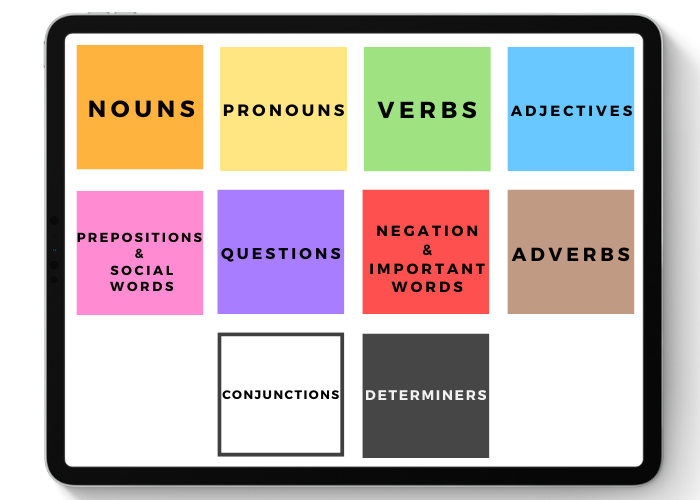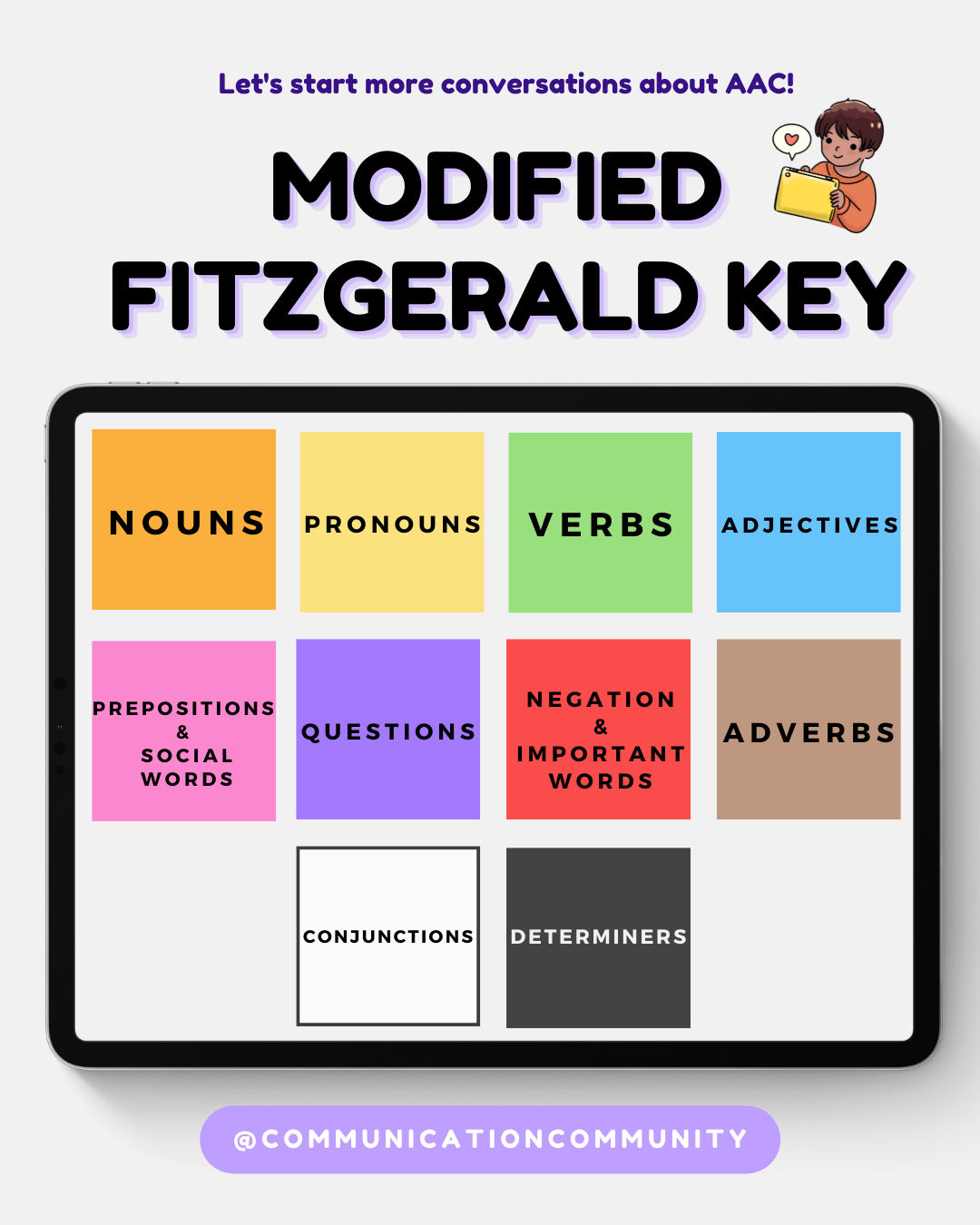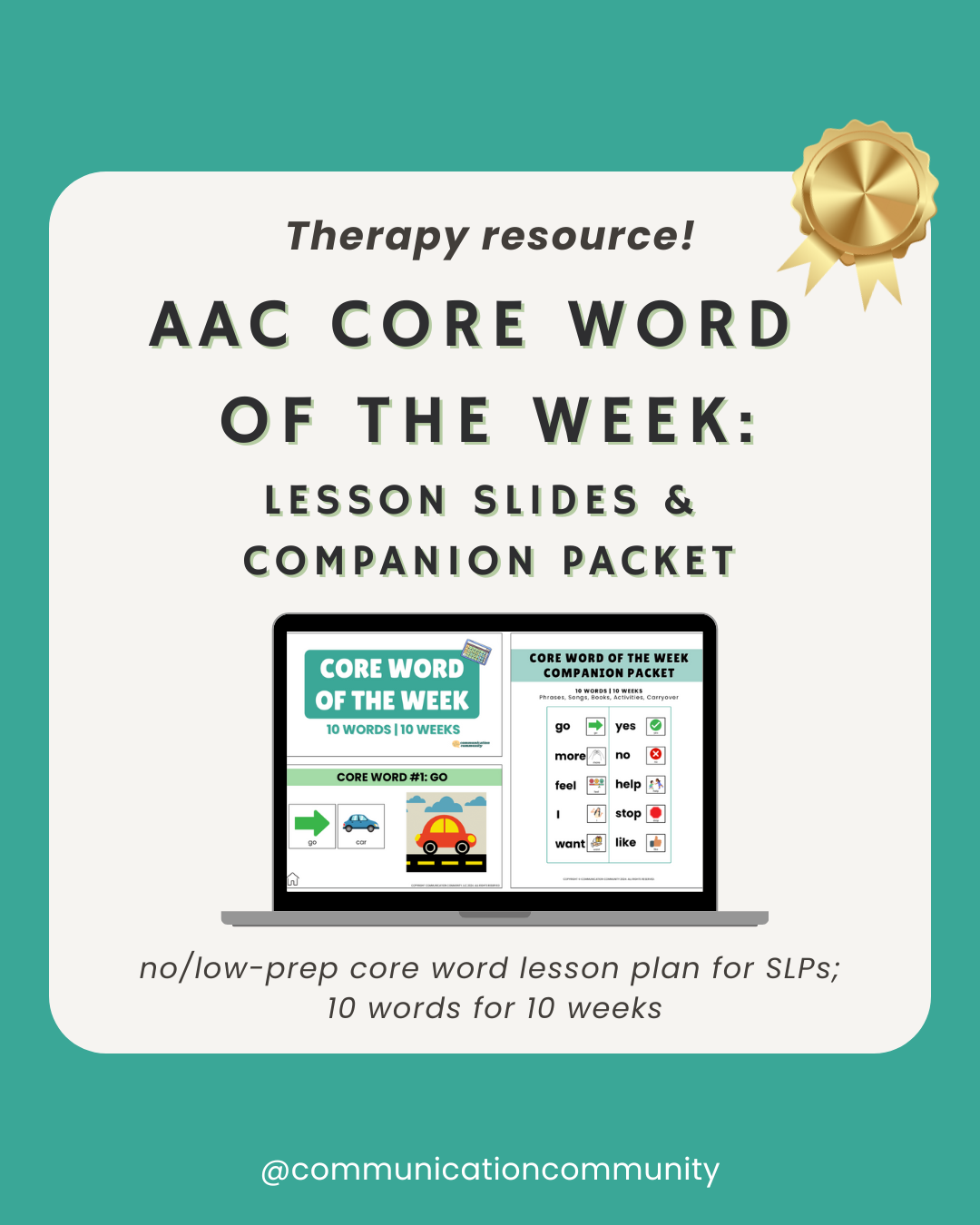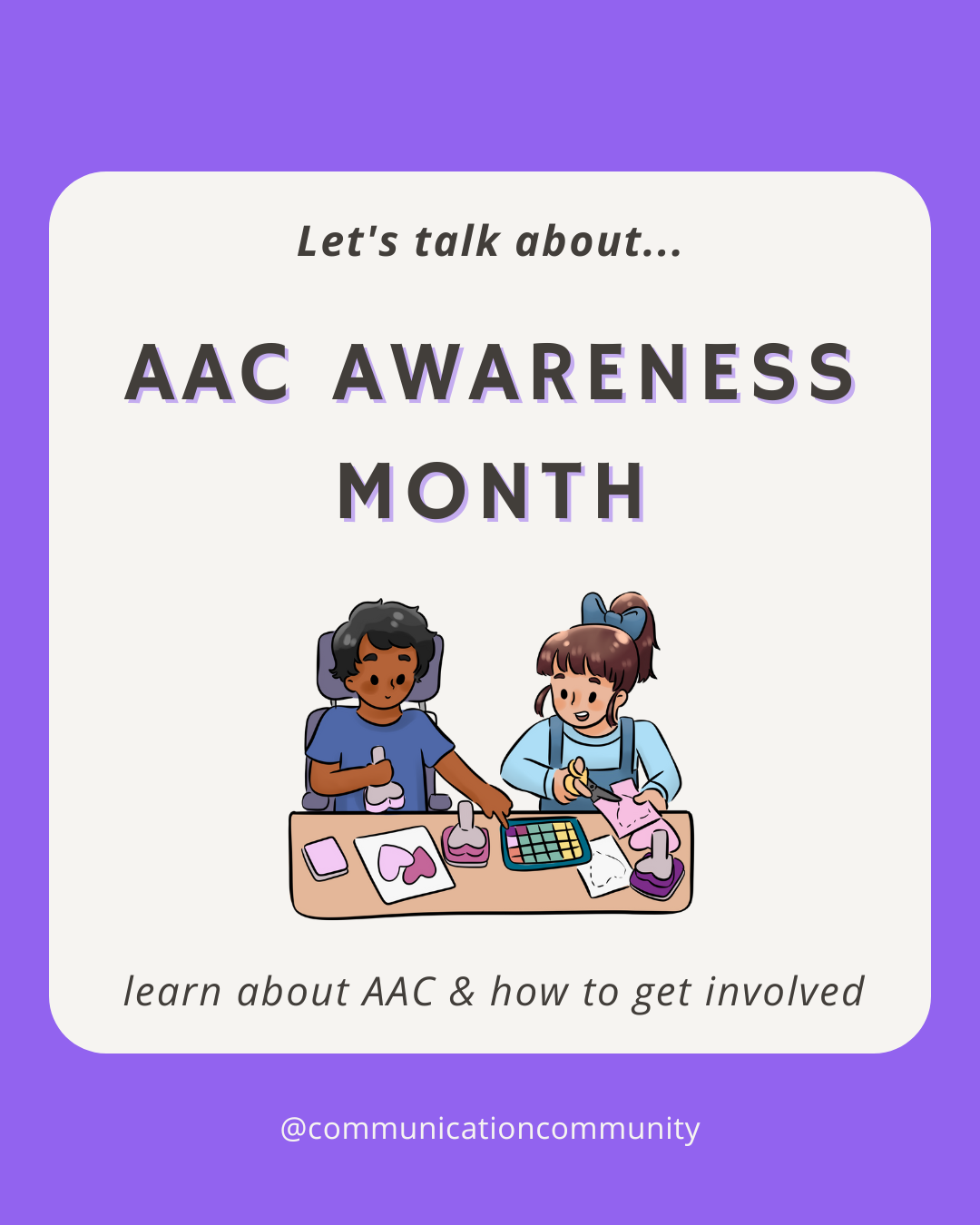What is the Fitzgerald Key?
The Fitzgerald Key was developed by Edith Fitzgerald in 1929 (Lautenschlager, 2016). At the time, the primary focus of this tool was teaching grammar to individuals who were hearing impaired or deaf. This visual support system has since expanded and evolved over time.
The Modified Fitzgerald Key, as it relates to AAC, is a system of using color-coded display designs within an AAC system to increase visual access and linguistic relationships (Thistle & Wilkinson, 2009).
[Modified] Fitzgerald Key: Now
Presently, the term Modified Fitzgerald Key has extended to the realm of augmentative and alternative communication (AAC). The Modified Fitzgerald Key, as it relates to AAC, is a system of using color-coded display designs within an AAC system to increase visual access and linguistic relationships (Thistle & Wilkinson, 2009). Basically, it uses a specific color-coding system to represent different grammatical categories and parts of speech (e.g., green for verbs, yellow for pronouns, orange for nouns, etc.). The Modified Fitzgerald Key can be incorporated into low tech AAC systems, such as communication boards, to high tech AAC systems, such as speech-generating devices (SGDs). For SGDs, the Modified Fitzgerald Key is a primary feature for many pre-programmed core word templates.

In my research and experience, I have seen some variation with the color schema of the Modified Fitzgerald Key, as well as other AAC color keys (e.g., Goossens,’ Crain, and Elder). Though some schemas may differ, it is important to be consistent with whichever color schema you choose. That is key (no pun intended)!
Fitzgerald Key: Considerations & Questions
Every AAC user is DIFFERENT and has their own unique way of communicating (as do us all). Therefore, it is important to note that the AAC language system and display for each user can vary. What do we mean by that? Well, the Modified Fitzgerald Key could certainly be highly beneficial for one AAC user and not make a big difference in use with another AAC user. I have personally seen both results.
When assessing and selecting a language/display system for an AAC user, there are several considerations before nailing down a color-coding system or any display specifications for that matter.
Questions you can ask yourself:
- Does the individual present with any visual impairment/low vision or color vision deficiency (also known as color blindness) that could impact their perception of certain colors?
- Does the individual present with any sensory or neurological differences that could be sensitive to certain colors or displays?
- Does the individual produce more accurate/inaccurate responses using a color-coding system vs. another?
- Does the color-coding system support/reduce efficient communication for that user?
- Does the AAC user respond more favorably to one form of color-coding over another? E.g., using specific colors for button backgrounds vs. button borders.
- Does the AAC system in-use lend itself to adaptability? E.g., do system settings allow the programmer to alter colors/make display specifications?
- Does the AAC user already have fluency using their present system? Does it warrant any changes that could potentially negatively impact the individual’s access to communication?
How can I incorporate the Modified Fitzgerald Key?
If you are a speech-language pathologist (SLP) or someone working with an individual with an AAC system, there are many ways that you can incorporate this practice. If you have asked yourself the questions above and still determined, this could positively impact the communication functions of the user, here are a few additional ways to support this practice:
- Keep colors consistent with other visual supports/symbols you might be using in your therapy room, classroom, clinical setting, etc.
- Inform other individuals who are working with the AAC user (that also includes parents/caregivers) about this practice to encourage consistency across contexts and settings.
- Determine what form of color-coding (e.g., using specific color for buttons vs. button borders) is preferred by the AAC user and supports efficient communication. Additionally, to what degree (e.g., using only a few colors from the Modified Fitzgerald Key vs. using all of them). Either way, keep these forms consistent across the user’s system.
As you can see, consistency will make a huge difference in the success for your user! Have other button/display modifications that have been successful for you or your client/loved one? We’d love to hear about it - hello@communicationcommunity.com
Citations/further resources:
https://www.lva.virginia.gov/public/dvb/bio.php?b=Fitzgerald_Edith_Mansford
https://praacticalaac.org/strategy/communication-boards-colorful-considerations/
http://tdvox.web-downloads.s3.amazonaws.com/Core%20First/TD-TheStory_of_Core.pdf
https://pubs.asha.org/doi/10.1044/1058-0360(2009/08-0029)
https://storage.outreach.psu.edu/autism/45.%20Presentation_1.pdf
Image credit: Drawn to AAC



![How to Write AAC Goals [with goal bank]](https://www.communicationcommunity.com/content/images/2024/03/How-to-Write-AAC-Goals---ghost-cover.png)
![How to Write Neurodiversity-Affirming Speech Therapy Goals [with goal bank]](https://www.communicationcommunity.com/content/images/2023/12/How-to-Write-ND-Goals---ghost-cover.png)

![What is Modeling Without Expectation? [AAC resource]](https://www.communicationcommunity.com/content/images/2023/03/1.png)
